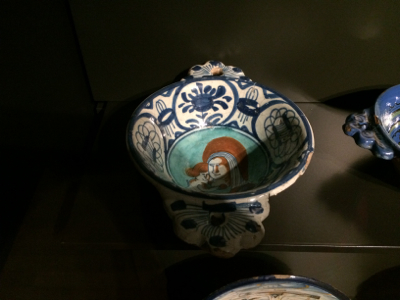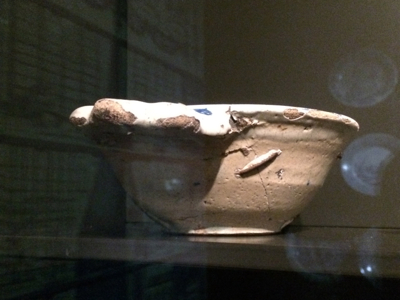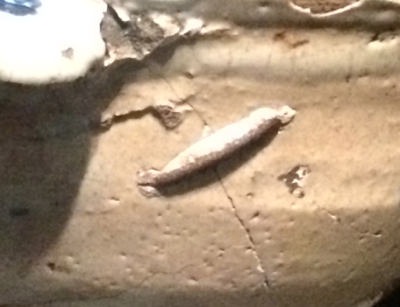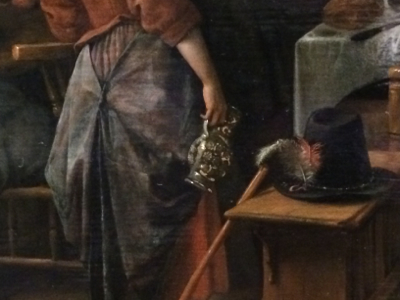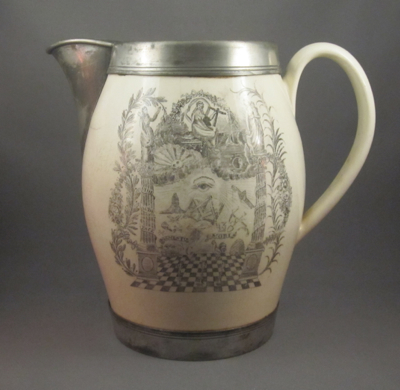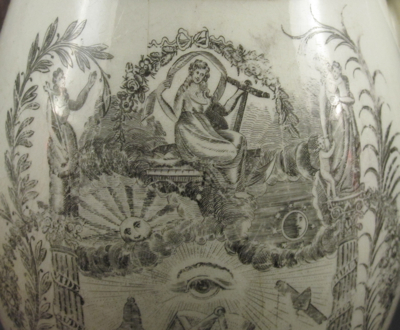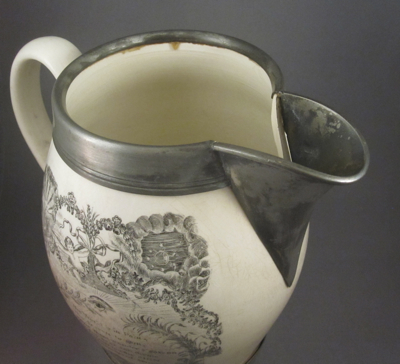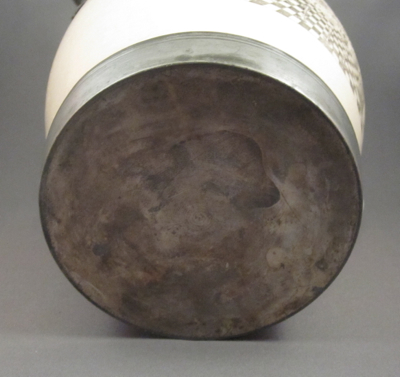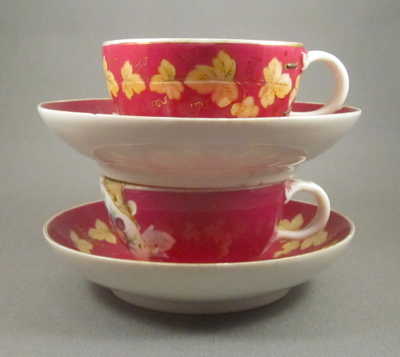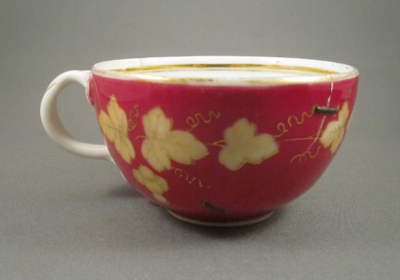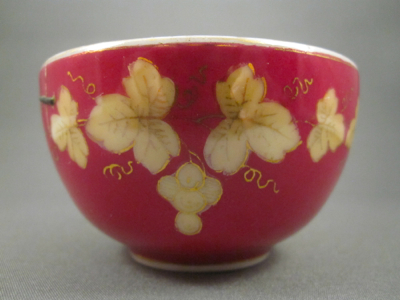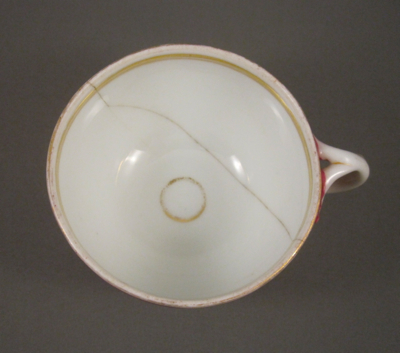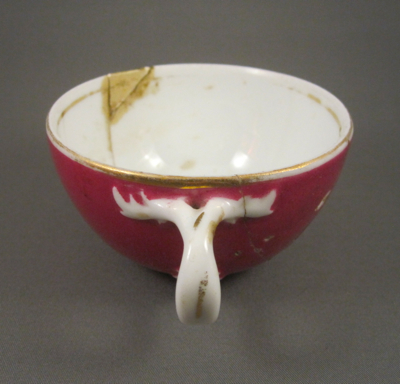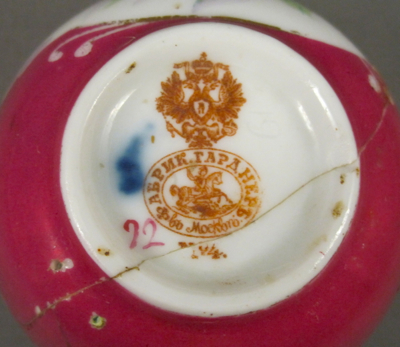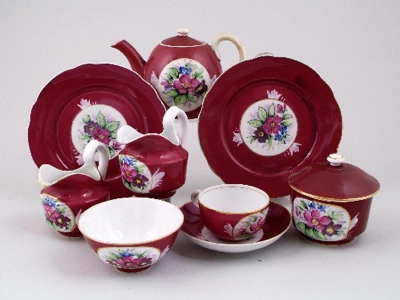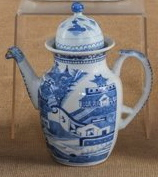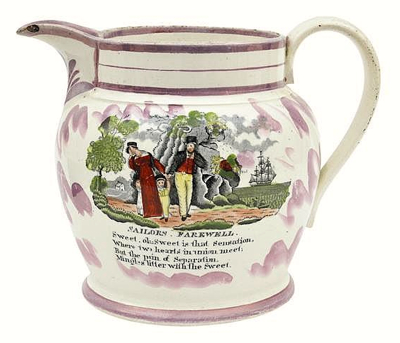Past Imperfect goes international, as I am in Amsterdam, the first stop of my European jaunt and research tour. I have just returned from spending a few hours at the gorgeously renovated Rijksmuseum, home of world renowned art and a collection of exquisite Dutch ceramics. While most pieces I saw were jaw-dropping, they appeared to be intact and had in fact, not been dropped at all. So, no inventive repairs for me to drool over. But I did see one 17th century jug with a metal sleeve covering a broken handle, but the repaired end was turned away from the front of the vitrine, so no one could see it…except for me. Sadly, it was too dark to get a good photo of it.
I did spot this early Delft bowl with religious decoration that was just sitting on a shelf without any mention of the HUGE, early metal staples holding it together. Yes, I thought you’d like it, too.
I also stumbled upon a wonderful oil painting, Prince’s Day by Jan Havicksz Steen (1625-1679), depicting the birthday celebration of Prince William III of Orange-Nassau on November 14, 1650. I always imagined that many a “perfect” jug and tankard became candidates for inventive repairs after long days and nights of rowdy celebration. If you look closely, you can see a barmaid holding a jug in her right hand with what appears to have a replaced pewter handle and support straps along the middle and bottom. I have seen repairs such as this on German jugs of the same time period, so I was excited to see it included in this painting.
This coming Thursday, April 3rd, at 6PM, I will be giving a lecture in London at Bonhams for the English Ceramic Circle. Please come see me and say hello.
